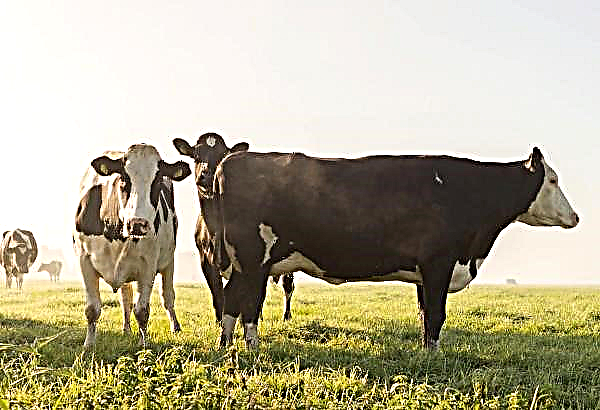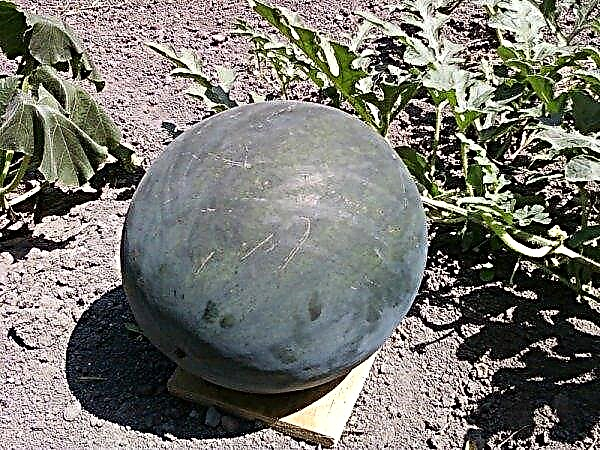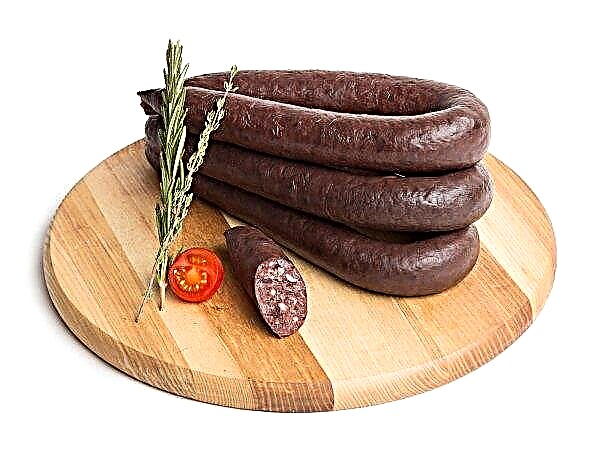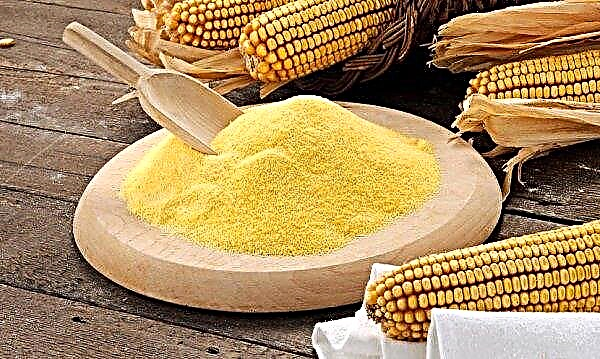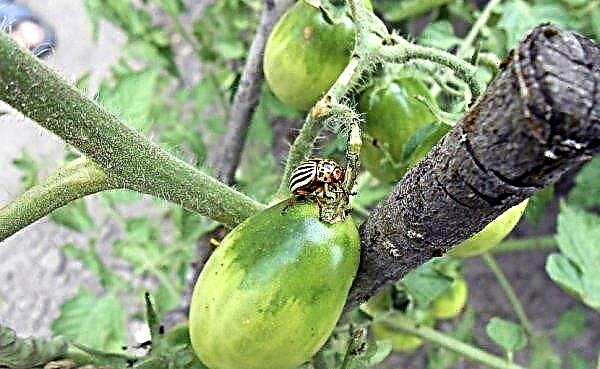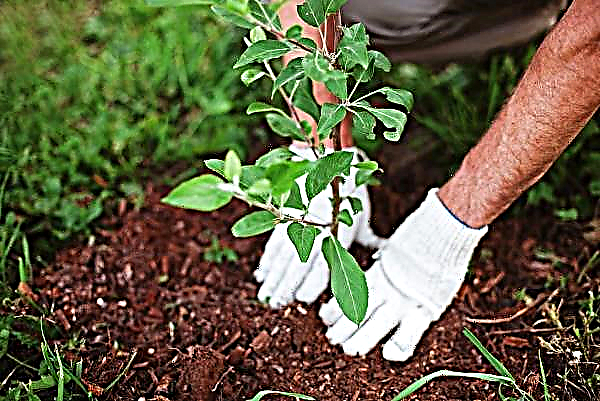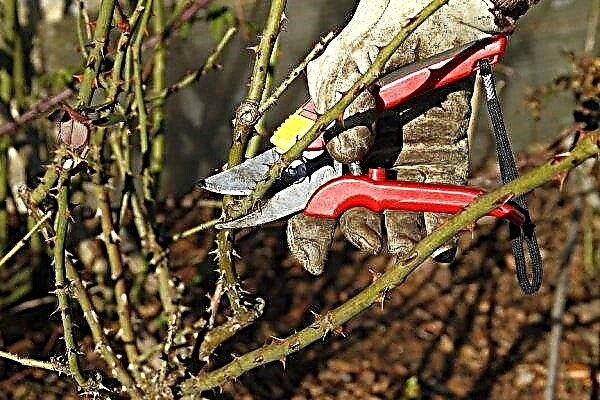Representatives of the cedar genus belong to strong and hardy crops, but they are also susceptible to disease. It is possible to determine what kind of disease struck the plant by observing its foliage and branches. To do this, you need to know the main signs of disease and the features of vital activity of cedar pests. Read more about this and treatment methods later in the article.
Why the cedar starts to hurt
Cedars are monoecious evergreen trees up to 50 m high with a powerful trunk. They grow in Europe, Asia, North America and even in Africa. The genus consists of 4 species: Atlas, Himalayan, Lebanese and Cypriot cedars. But in nature there is also a number of famous trees, the name of which contains the word cedar, but they belong to completely different genera.
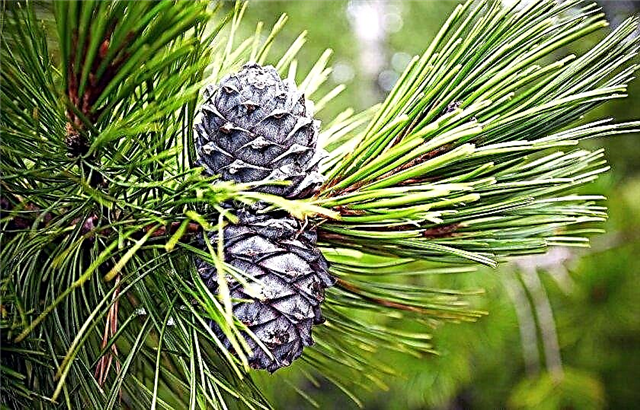
For example, Siberian cedar is Siberian cedar pine (Pinus sibirica), Canadian white is the synonymous name of Western thuja (Thuja occidentalis), and Canadian red is folded thuja (Thuja plicata). The degree of resistance to diseases, like the diseases themselves, may vary, although there will be a number of common ones.
A healthy and well-developed tree is able to cope with pathogens and insects on its own. But if any factors weaken it, then the cedar will not cope with the infection and begins to hurt. If the disease is launched, it will be difficult to cure the plant.
- So, for a seedling, weakening factors will be:
- lack of watering or, conversely, excessive amounts of moisture;
- weeds
- non-nutrient soil;
- transplant process.
In addition, aromatic substances secreted by conifers attract insects, and this can also contribute to infection. An adult tree is infected with phytopathogens through mechanical damage to the bark, as well as due to the transfer of bacteria from diseased trees to healthy ones.
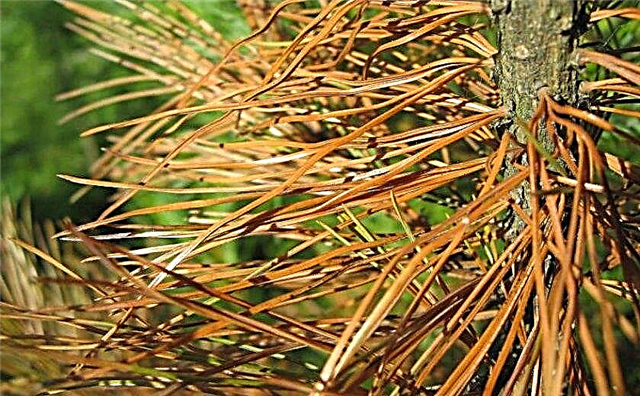
Too old cedars can be weakened by the long-term development of fungi, lichens and other microorganisms on them. To reduce the number of such factors, it is recommended to provide cedars with optimal conditions for their development.
The incidence is also affected by:
- varietal predisposition of a tree to diseases;
- lack of control and timely preventive measures;
- violations in the implementation of agricultural measures for the care of trees.
Important! Currants, gooseberries and conifers are susceptible to attacks of the same phytopathogens, such as fungi that cause rust. For this reason, growing them nearby is not recommended.
Cedar diseases and their treatment
The disease can be preceded by adverse climatic conditions. They arise due to damage by hail, lightning, frost. Pathogens can be transported by air, water, using living things (insects, worms, birds) or during agricultural work in the garden.
For example, if a tree is treated with a non-sterile tool, then microorganisms are transferred from one plant to another. Putrefactive diseases arise due to unfavorable conditions for growth: excessive moisture, insufficient air exchange in the crown and other imperfections in the living environment.
 Given the causative agents of the disease, they are divided into several main groups: fungal, viral, bacterial, necrotic.
Given the causative agents of the disease, they are divided into several main groups: fungal, viral, bacterial, necrotic.
In order to understand how healthy the cedar is, you need to pay attention to the first signs of illness and, having discovered them, quickly begin to treat:
- Examine the tree for yellowed needles. Most likely, these are signs of tick damage. To combat them, oily sprays are used.
- Then pay attention to the needles. If you observe gnawed needles, these are symptoms of the presence of caterpillars. During the day, they descend closer to the ground, and at night they rise to food sources. In this situation, hunting belts will help.
- White plaque, which is formed on the needles and branches, are signs of a pine hermes lesion. Black plaque is formed by sooty fungi - this is the result of secondary infection after aphids.
- Tiny holes in the bark are evidence of the appearance of bark beetles, as well as their worms. They often attack already sick and old trees.
- Needles damaged by sunshine or winter low temperatures are also more attractive for insect attacks than healthy ones. To prevent this, you need to adhere to the rules for preparing trees for wintering.
- The presence of needles, which changed color, is a symptom of fungal diseases - for example, rust, fusarium. Handle a diseased plant with fungicides.
Seryanka, or tar cancer - bloating on a cedar stem
Seryanka refers to damage to a tree stem. Call her mushrooms Cronartium flaccidum or peridermium pini. After the fungal spores get through cracks in the cedar bark, they germinate in it. And this is exactly what gave the disease the name “Seryanka”.
As it grows, growths appear on the affected area, covered with yellow etsidiospory, similar to flakes. When ripe, they are carried by the wind in the form of a yellow powder. After the spores fly apart, ulceration of the cortex is formed in this area with copious release of tar.
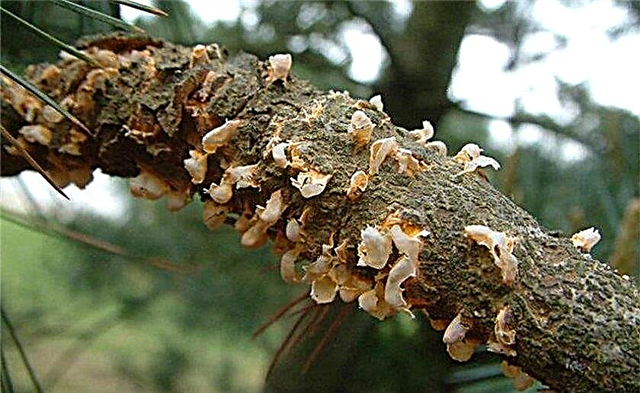
If the cedar is old, then the resin will not be too much. It spreads along the trunk, and the bark acquires a black, resinous color. And this gave the second name of the pathology - tar cancer. Since the disease can take a long time, the tree will gradually dry out, starting from the top.
Among the mandatory measures to eliminate the disease - cleaning the affected areas to a healthy bark. Then the surface is disinfected with a 5% solution of copper sulfate and coated with oil paint. All cut pieces of wood are burned.
Important! Insect pests can not be noticed, since many of them hide during the day, but you can see the results of their activities: bite needles, cobwebs, plaque, etc.
It is currently believed that fungicides are not very effective in controlling the disease. But nonetheless used Boscalid, "Cantus", Bellis. They block metabolic processes in the cells of the fungus, inhibit the process of its respiration and inhibit the production of basic building cells.
- Preventive measures will be:
- Late October watering of cedar.
- Mandatory burlap shelter for small seedlings.
- Apply a mulching layer over the root zone. This helps prevent soil freezing and root damage due to a sharp temperature difference after the thaw.
Tan galls rust
Rust appears as tan galls on cedar branches. Their diameter is up to 5 cm. Formations can also have orange antennae, appearing after rain.

The peculiarity of the disease is that to complete the life cycle, the fungus uses 2 different types of tree - for example, cedar and apple or hawthorn. For this reason, the disease causes serious harm to farm gardens.
To combat it, a copper-based fungicide treatment is used. Spraying is repeated 3-4 times with an interval of 10 days. You can also use not one, but 2 drugs: it is believed that this increases the chances of a successful fight against the fungus.
Did you know? On the island of Yakushima in Japan, the Japanese cedar Jōmon Sugi grows, which is considered the oldest in the world. His age is estimated at 2000–7000 years
Rust can affect both needles and cones. So, the fungi Coleosporium often hit with needles. Between the diseased needles, a white-yellow liquid will bubble - these are spores of the fungus. Then the needles turn brown and begins to crumble.
To combat the disease it is necessary:
- remove weeds that become carriers of fungal spores;
- then clean the bark from damage, cut and burn damaged branches;
- after disinfecting the sections with a solution of copper sulfate 1% and cover with oil paint.
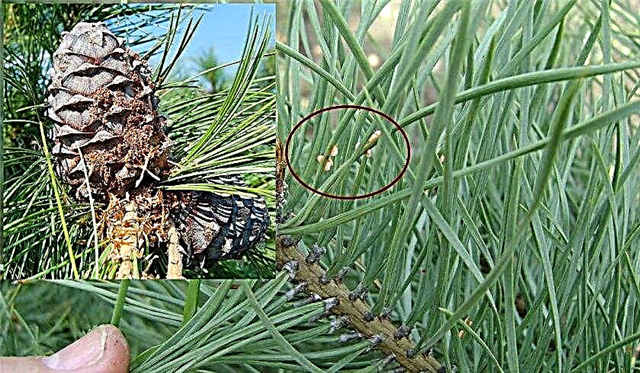
For prevention, it is imperative to spray in the spring "Arceride" (50 g per 10 liters of water). Repeat treatment 4 times with an interval of 10 days.
The rust of the cones is accompanied by the appearance of dark brown seals with a diameter of 2-3 mm on their scales. Such cones need to be collected and burned, and the tree is treated with the same drugs as with other types of rust.
Pests and the fight against them
Pests are the main carriers of disease. As a preventative measure, it is recommended that the trees provide sufficient fresh air and sun. The crown should not be thickened, and there should not be weeds around that can serve as a refuge for insects. If infection has occurred, fungicides are used to control insects.
Video: cedar pests
Pine aphids on young needles
Pine aphids are shiny orange-brown insects at a young age, and later gray or dark brown. They are not too large - up to 5.2 mm. Aphids winter in the form of eggs (yellow-brown small), laid in needles. The presence of aphids is also accompanied by the presence of ants - they are their main peddlers.
Did you know? In The Epic of Gilgamesh, the sacred cedar forest is referred to as the kingdom of the gods, into which the hero invades in search of immortality.
It is not difficult to detect insects: they stick to young needles. Around the tree you can also see anthills. As a result of intense infection, the needles begin to fall. Also, resistance to damage by pathogens decreases and growth slows down. This is due to the toxicity of insect saliva and sooty fungi that settle on the sweet secretions of aphids.

With a small number of pests, they can be washed off with a strong stream of water. But if there are a lot of them, apply spraying Actellicus, "Karbofos", "Fufanon". Repeat the treatment after 3 weeks, when a new generation of aphids appears from the laid eggs.
Signs of a spider mite - spider webs
A spider mite is not one insect, but more than 1200 species, united in 95 genera. Many of them can live on different plants, including conifers.
The tick settles on the underside of leaves or branches. Due to its small size (1 mm), it is rather difficult to notice. Many species of mites weave cobwebs - this is the sign and it can be understood that the tree is infected. Another sign of infection is small dots on the needles or leaves of plants.
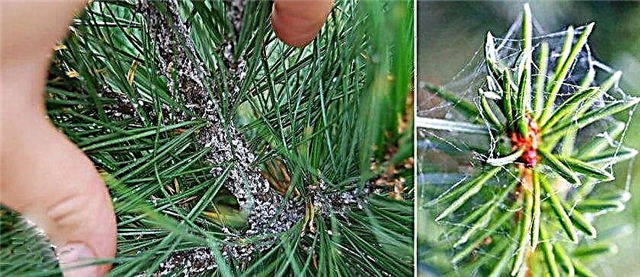
The insect carries the wind. Optimum conditions for their development occur when hot, dry weather sets in. The main preventive measure is the use of methods aimed at the destruction of females overwintered in the ground. To do this, the soil and plants are sprayed with acaricides.
As for the methods of struggle, there are several of them:
- Insects can be washed off with cedar.
- In the garden, natural predators are planted - ladybugs or predatory mites.
- For those who prefer chemical control methods, there are a number of drugs - Apollo, Ditox, "Fufanon".
Spraying is carried out during the growing season. You will need to dilute the product with water according to the instructions. For instance, for Apollo, it’s 500 g per 1 liter of water. It will take 2 treatments with an interval of 40 days.
Spruce tick and needles wilting
Spruce is one of the varieties of spider mites: it damages the needles. The insect is extremely prolific - during the season, females are able to give up to 6 new generations of the pest, so the maximum amount of damage occurs at the end of summer, when the population grows to the maximum.
In hot weather, the number of ticks will increase very quickly. Females lay 50 to 100 eggs throughout their life. The life cycle of an insect varies depending on weather conditions and air temperature. It can be 3 weeks if the conditions for development are favorable.

Symptoms of the disease are cobwebs and darkening needles. To reduce the degree of damage, you need to increase humidity. The same drugs are suitable for controlling insects as for the rest of the spider mites.
Acaricidal agents can be sprayed directly at pest accumulations. It is allowed to make 3-day intervals between treatments in order to destroy those insects that were not affected by the drug the previous time.
Important! Use caution when applying oil sprays: under the sun, the oil will heat up and cause burns to your trees.
Pink spheres in internodes - small spruce shield
False shields are completely unlike insects: they look like pinkish balls in the internodes of needles. These pests feed on the juice of young shoots. This causes weakening of the cedar and leads to drying out of the needles. Like aphids, false shields leave behind sticky molasses. Sooty fungi begin to develop on it, providing the tree with a secondary infection.
It is not difficult to determine the presence of these insects: firstly, they are noticeable, and secondly, honey bees and other insects appear around the tree, attracted by the smell of sweet molasses released by the pest.
 The insect is about 4 mm long. They are wingless. The surface of the body approaches in shape to the ball.
The insect is about 4 mm long. They are wingless. The surface of the body approaches in shape to the ball.
The life cycle lasts 1 year. Adult females appear in May. Oviposition ends by the end of May. The larvae will feed on needles until the fall, and then descend to the lower part of the branches for wintering. The range of false shields covers the whole of Europe and North America.
Among the pest control chemicals is spraying Ditoxom, Sumition, Iskra, Fufanon Novaother drugs. For example, Proteus diluted as follows: 6 ml / per 10 liters of water. The consumption will be 3 liters per 1 tree 1 m high.
As for adult cedars, you may need about 100 liters of solution. A drug Aktara introduced under the root. Dilute it as follows: 1.4 g per 0.5 l of water. For one meter tree you will need 4 liters of mortar.
Hermes - white plaque on cedar branches
Hermes is a representative of sucking pests. It is a species of aphid. Its presence is noticeable on a whitish coating on the shoots - this is an accumulation of larvae. Insects winter under the bark of spruce; in the spring they lay eggs.

The infection of other trees is due to the fact that part of the Hermes is winged: they base new colonies on other trees. The insect is distributed mainly in Siberia and in the forest-steppe zone.
To combat the pest, the affected shoots are sprayed with the drug Inta-Vir. Its active substance (cypermethrin) paralyzes hermes, affecting its nervous system. Also apply spraying "Fufanon".
Scoop and its gray furry caterpillars on needles
Butterfly scoops harm many crops. These include spotted nightlight, moth. These are butterflies of gray-brown color, which begin to fly in May and continue until July. In the spring, they lay their eggs, and then their larvae (gray furry caterpillars) feed on plant juices and plant tissues for 1.5 months. During the growing season, butterflies manage to lay 1–4 generations of eggs.

To treat plants from larvae, scoops are used Kinfos, Fascord, Tsiperus, Alatar, "Bitoxibacillin". All drugs are contact. Their active substance should paralyze the nervous system of the pest.
During the active flight of butterflies, pheromone traps are also used. On the inner surface of this design there is a sticky layer. The smell attracts males, and the adhesive surface prevents them from flying up.
Ugly gray moth caterpillars
The pine moth, like all scoops, appears in mid-May. It’s difficult to notice a sitting butterfly: the color of its wings coincides with the color of the bark - a nondescript, gray-brown. The butterfly begins to lay eggs between the needles. Over the summer, she is able to do 4 masonry.
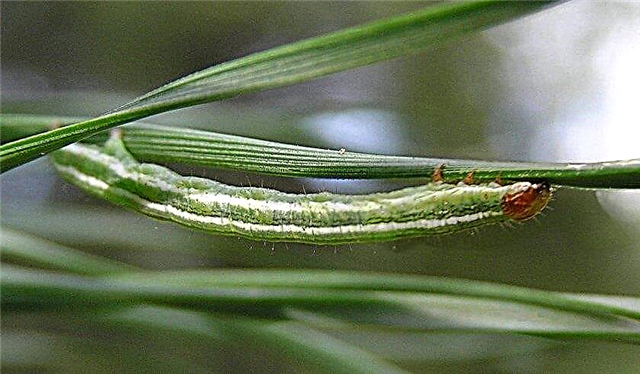
The caterpillars that appeared a month later will actively eat young needles. Their length is 5–7 cm.It moves in a loop-like manner, moving its front legs to its hind legs, which makes it appear that it is measuring a branch.
The easiest way to deal with the pest is a hunting belt on a cedar. In spring, he will not allow the larvae wintering in the ground to climb to the crown. In addition, you can use a trap with pheromones or make additional traps from pieces of rubber lubricated with sticky glue.
 1 - clean the bark of the stem; 2 - tie the paper with twine; 3 - spread paper with glue.
1 - clean the bark of the stem; 2 - tie the paper with twine; 3 - spread paper with glue.
They also cultivate the soil in the garden in the fall to destroy part of the wintering insects. Insecticides should be used in the spring at the time of the departure of the butterflies, that is, in mid-May. It can be drugs Karbofos, Fitoferm, Decis.
Important! During the summer, 1 moth caterpillar is able to eat 3.5 kg of young needles, so these insects are considered dangerous pests.
Silkworm and branch drying
Pobegovyun is also called coniferous foliage. This is a butterfly of the Tortoise family. Its wings are orange-brown with transverse stripes of a lighter shade. Females fly from May to August. They lay eggs on the bark near the apical buds. When the larvae appear, they will feed on these buds, and as they grow they go inside the shoots - their further development will take place there.

Silkworm epithets were obtained by the larvae because they line their movement with silk-like cobwebs. As the wood is eaten and the larvae develop, the cedar branches will dry out. The shoots will gradually bend, and tips that look like a broom will form at the ends.
To control pests, spraying with bacterial insecticides is used - for example, "Lepidocide". This is a drug designed to kill Lepidoptera. It is not toxic to bees and birds and may well be used both in industrial cultivation of crops and in the home garden. The consumption rate is 1–1.5 g of the drug per 10 liters of water. It will take up to 5 sprayings with an interval of 5 days, as the butterflies lay several clutches during the summer.
Did you know? Korean cedar wood and the oils derived from it act as natural moth repellents, which is why it is highly regarded in furniture production.
Stem pest of old cedars - bark beetle
Bark beetle is also called a typographer. This is a stem pest. The body length of the beetle is up to 5 mm. In spring, when the weather is warm (+ 20 ° С), the females begin to lay eggs under the bark. Each can lay up to 120 eggs. After 14 days, larvae will appear from them. Bark beetles are able to eat a lot of wood during their lifetime. As a result of their activities, entire forests can be destroyed in a short time.

Prevention of infection of cedars with bark beetles consists of attracting birds to the territory, killing insects with pheromone traps, and spraying with pyrethroids during the growing season. Pyrethroids are a group of drugs based on Dalmatian chamomile or its synthetic analogues: Teflutrin, Allethrin, Vaportrin, Alpha Cypermethrin other. They are able to penetrate deep into plant tissues and destroy insects.
Did you know? The Dalmatian chamomile was first used by the soldiers of Alexander the Great as an insecticide. They spread it throughout Asia up to the territory of ancient China.
How to get rid and how to treat lichen
On the bark of cedars, which are not sufficiently air-blown and poorly lit by the sun, sooner or later lichens appear. They retain moisture and do not dry well after rain. In winter, the surface under the lichen may crack from freezing of water crystals in it. A good shelter for pathogenic microflora and some pests is also formed here.
 Therefore, lichens must be removed from the trunk.
Therefore, lichens must be removed from the trunk.
To work, you need a stiff brush: it must be elastic enough to help clean the vegetation, but not damage the trunk. The cleaned area must be wiped with iron sulfate (300 g / 10 l of water) - this will prevent the further development of spores that could remain in the cracks.
Preventative measures
Like other conifers, cedars are susceptible to diseases that can damage them or cause death. And it does not depend on where the tree grows - in the forest or in the park. In addition, old, rotten or sick cedar is a potential danger to the safety of people in settlements. For these reasons, it is important to take timely measures to prevent diseases.
Factors affecting the health of cedars are:
- fungi parasitizing on them;
- climatic conditions;
- place of planting, including soil composition, watering.
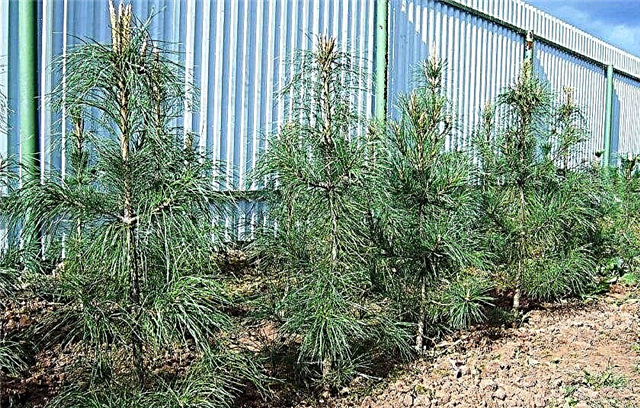
It is difficult to accurately diagnose diseases. They can occur without visible symptoms - for example, infection of a tree with bark beetles or rotting of the roots at the initial stage. Loss or discoloration of needles can be caused by stress from drought or floods, damage by herbicides, ticks, and fungi. And this also becomes an important reason to start with prevention, without waiting when it will be necessary to treat the tree.
Prevention includes:
- regular sanitary checks of trees;
- planning of landings taking into account the state of the soil and taking measures to improve it;
- managing the conditions in which cedar grows.
It is necessary to consider whether the site prepared for planting is not susceptible to flooding, drought or soil compaction. If possible, you should eliminate the shortcomings, and then choose the varieties that can grow in the conditions you have.
 When buying a seedling in a nursery, you need to find out what diseases a particular variety is susceptible to, the terms and conditions under which they occur.
When buying a seedling in a nursery, you need to find out what diseases a particular variety is susceptible to, the terms and conditions under which they occur.
This will allow you to plan a schedule for treating wood with fungicides in order to prevent infection. It is also advisable to find out in local garden societies what diseases are common in your area. This will help in identifying the problem and choosing the best strategy for chemical treatment.
If a diseased tree is found, then you will need to assess the degree of the problem. With a small lesion, it is necessary to remove the infected branches, treat the wound with a solution of Bordeaux liquid 1% and cover with garden var.
Important! Tools used for work must be wiped with alcohol before and after trimming, so as not to transfer phytopathogens from diseased cedars to healthy ones.
Pests and diseases can spread very quickly, so treatment should be started as soon as the first signs of a problem are noticed. Keep in mind that it needs to be carried out several times in order to destroy those insects that hatch later from laid eggs. This will not only keep cedars healthy, but also support their immunity.



